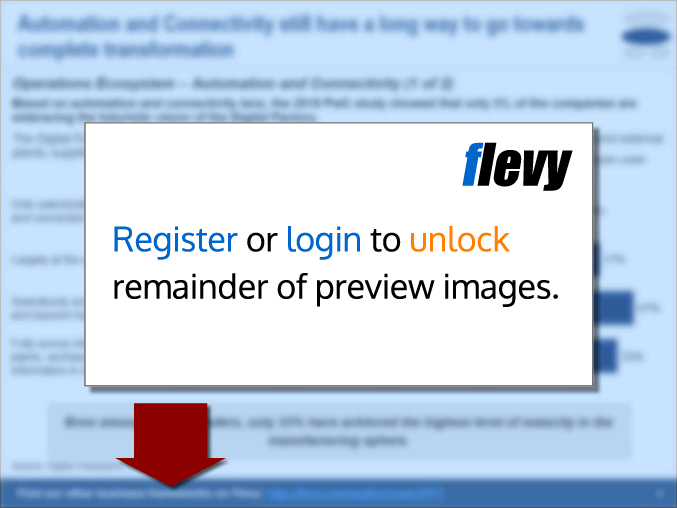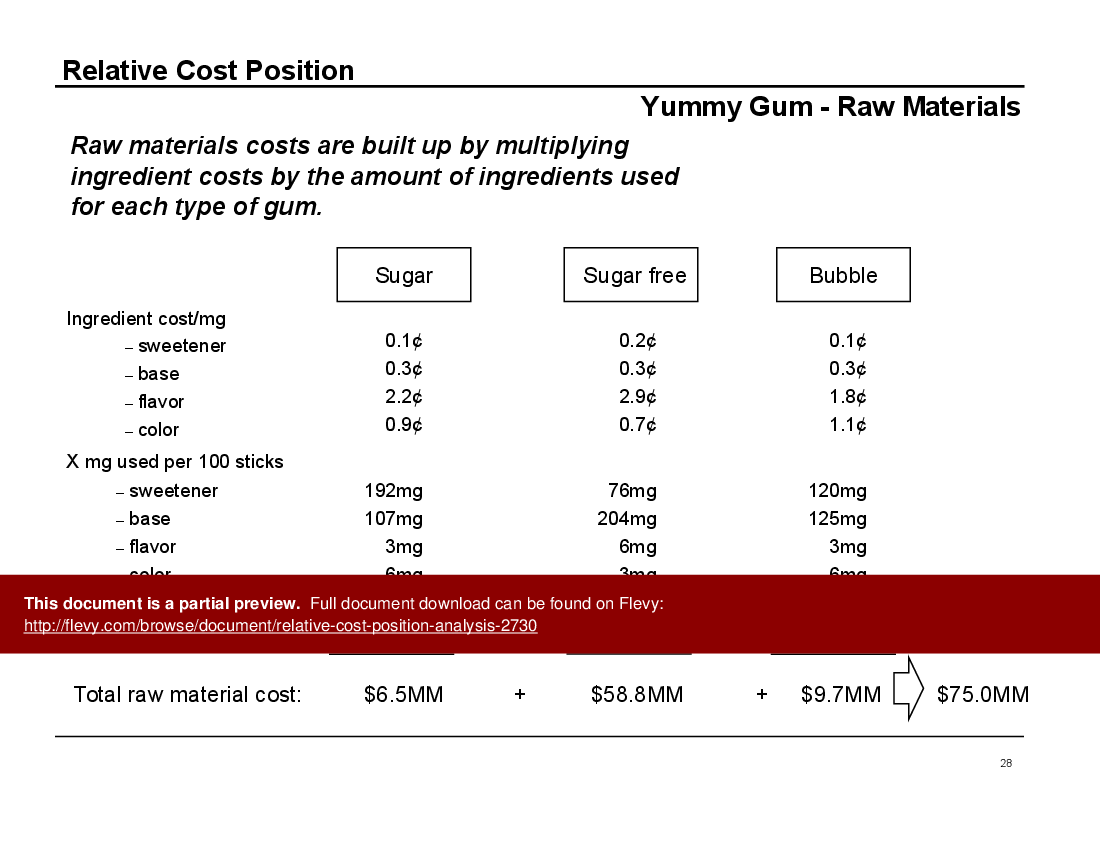Relative Cost Position Analysis (PowerPoint PPT Slide Deck)
PowerPoint (PPT) 48 Slides
COST OPTIMIZATION PPT DESCRIPTION
Relative cost position (RCP) is a key analytical tool used for cost analysis.
We can use RCP to determine a company's practical full potential cost position based on a comparison of its unit costs with those of its competitors and an understanding of the client's business. RCP analysis helps answer both strategic and tactical questions.
This deck has 48 slides and contents include:
• The relative cost position (RCP) concept
• Applications
• RCP Steps
• Client example
• Challenges
• Key takeaways
The Relative Cost Position Analysis document is a comprehensive guide for executives looking to gain a competitive edge through cost management. It includes detailed steps for mapping the business value chain, identifying cost elements and drivers, and scouring information sources for cost data on clients and competitors. The process is thorough and involves building, comparing, and reality-checking cost bars to ensure accuracy and relevance.
The document also provides real-world examples of how RCP has been used effectively by companies. One case study highlights a chewing gum manufacturer that identified $29MM in annual savings through RCP analysis. Another example shows how a client in the diaper business regained 10% market share by leveraging RCP to identify optimal pricing strategies. These examples underscore the practical applications and tangible benefits of RCP.
Key success factors are emphasized throughout the document. For instance, mapping the value chain from end to end and tying costs to operations rather than accounting categories are crucial steps. The document also stresses the importance of being persistent and creative in gathering cost data while maintaining ethical standards. These insights are invaluable for executives aiming to optimize their cost structures.
The document also addresses common challenges in conducting RCP. Understanding competitors' cost structures and determining the client's practical full potential cost position are highlighted as critical areas. The document provides strategies for overcoming these challenges, such as focusing on areas with the greatest potential for cost savings and adjusting for the client's specific situation. This makes the document not just a theoretical guide, but a practical toolkit for cost management.
Got a question about the product? Email us at support@flevy.com or ask the author directly by using the "Ask the Author a Question" form. If you cannot view the preview above this document description, go here to view the large preview instead.
Source: Best Practices in Cost Optimization PowerPoint Slides: Relative Cost Position Analysis PowerPoint (PPT) Presentation Slide Deck, Documents & Files
COST OPTIMIZATION PPT SLIDES
This document is available as part of the following discounted bundle(s):
Save %!
Essential Consulting Knowledge Builder
This bundle contains 21 total documents. See all the documents to the right.













